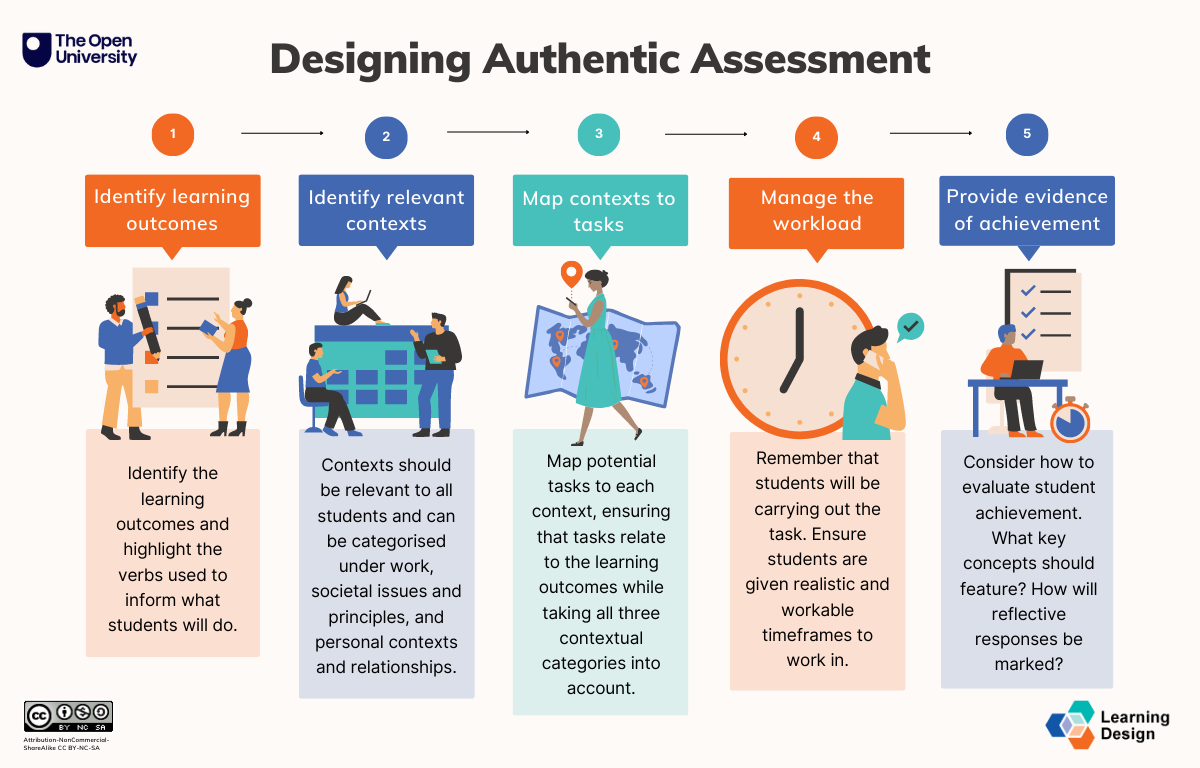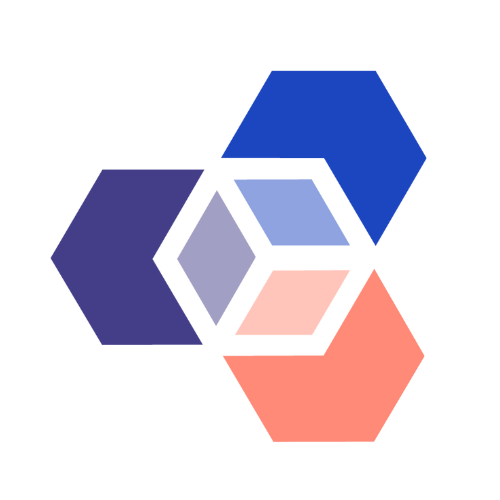Mary Simper ~ Learning Designer
The Learning Design team at the OU has been exploring assessment practices, which has led to some rich discussions on accessibility, student choice, learning outcomes and authenticity. Discussions around authentic assessment have led us to think about how we can design assessments, well… more authentically!
Let’s start with an analogy…
Imagine being given a recipe for the best brownie in the world. Wouldn’t you want to bake and taste the brownies? This is called a taste test and it gives bakers the opportunity to experiment before selling products.
Similarly, authentic assessment provides students with a taste test where they mix, measure, and stir ingredients, applying methods to create a final product. A key stage is reviewing how well the process worked and this is akin to reflection, a major component of authentic assessment.
Now that we’re all hungry for brownies, here’s a more concrete definition:
Authentic Assessment Definition:
Authentic assessment places the learner in a context relevant to their studies, goals, and ambitions. It provides them with the opportunity to apply what they’ve learned in this context, and to relate knowledge to both their personal lives and wider society. Reflection is a key component.
The issue with the term ‘authentic’
Authentic assessment is often interpreted as placing students in the ‘real-world’, which is mostly professionally orientated. We want to avoid this term because it draws a line between the ‘student world’ and the ‘real world’ which is unhelpful as it suggests that students won’t occupy the ‘real world’ until they have finished their studies (which we know is not true).
Recent literature suggests that it’s “not simply about the task, but the relationship the person/student has to the task” (McArthur, 2023). To be truly authentic, then, assessments should provide opportunities for students to understand society, to relate tasks to their identity, sense of self, values, and beliefs and to understand why and how their efforts can have an impact.
How do we design an Authentic Assessment?
We identified five key stages. Some, such as learning outcomes, could be applied to all assessment designs, but others, such as the context and task stage, help us to understand truly authentic assessment design.

Stage 1: Learning outcomes
Most assessment designs begin with the learning outcomes (LOs).
Here is an example LO for a Creative Writing course: “[…] To communicate objective evaluations of others’ work through constructive criticism”.
The verb ‘to communicate’ reveals exactly what we want students to do. This is a good starting point for assessment design. To find out more about LOs, check out Sarah Fulmer’s checklist for creating effective learning outcomes (2017).
Stage 2: Relevant contexts
After identifying what students will be doing, we can begin to explore contexts. As mentioned, there’s often an overemphasis on professional contexts in authentic assessment. To avoid this, we’ve broken it down into three categories (work contexts, societal issues/principles, and personal/relational contexts). For example, a creative writing course might include the following ideas:
| LO: “Communicate objective evaluations of others’ work through constructive criticism” | ||
| Work contexts | Societal issues/principles | Personal contexts and relationships |
|
|
|
In practice, we’d expect this list to be longer, but by mapping a LO to students’ future professional contexts, wider societal issues/principles, and personal relationships, we can explore authenticity beyond the work-related view.
Stage 3: Identifying relevant tasks
Now we need to explore each category and formulate tasks, for example:
| Scene setting: | You’re working with a media team for X company, and your team is developing a new radio drama series based on X. | ||
| Assessment Part | Category | Context | Task |
| Part 1 | Work
|
Working in film and media
|
A colleague approaches you with the first draft script for the pilot episode and asks for your feedback. Read the script and write an objective evaluation to provide feedback. |
| Part 2 | Societal | Strengthening relationships | You are asked to produce a set of guidelines for providing constructive feedback. Reflect on how they might impact relationships within the team. Can you think of any other contexts where constructive communication guidelines are critical? |
| Part 3 | Personal | Communicating with friends and family
|
Reflect on your evaluation and subsequent guidelines.
How might you apply these guidelines in your personal life, for example, when communicating with friends and family? |
In this example we’ve included a relevant working context, tied it to wider societal principles (the ability to strengthen relationships), and related it to students’ personal lives. In practice, the process would be more complex. There may be multiple LOs, inclusivity issues or workload concerns, but as an initial framework, these categories help us to consider authentic assessment beyond the ‘real-world’ definition.
Other things to consider…
There are some other things to consider, including:
-
-
- Building a problem or scenario: in practice we would expand on the above example, perhaps with a problem for students to solve.
- Task instructions: clear, concise, and workable instructions should accompany the task.
- Collaboration: consider asking students to collaborate, particularly where communication is the focus of the LO.
- Pilot test: as designers, we too should taste test our work (though ours might not always taste as good as a brownie!) and try it out with a small group of students to gain feedback.
- Key questions to ask:
- Will all students identify with or have knowledge of this context?
- Does this context disadvantage any students?
- Does this fit with students’ goals and ambitions?
- Have students been scaffolded for this context?
-
Stage 4: Managing the workload
Authentic assessments can quickly spiral into large tasks. It’s always worth revisiting an assessment design with workload in mind.
Stage 5: Evidence of achievement
Authentic assessment can be more nuanced than traditional assessment because it relies on reflection. This needs careful consideration when planning the marking. Consider the key concepts, such as how well a student has applied knowledge from a task to their personal lives.
Rounding it all up
Designing authentic assessment isn’t about creating a ‘real-world’ context for students to work in. It’s about giving them room to taste test the skills they’ve acquired in professional, societal, and personal contexts. Designing an authentic assessment is not simple, but our exploration has revealed principles that underpin truly authentic assessments, and we’re looking forward to building on this approach in the future. We hope you’ll have fun experimenting with these ideas.
References:
Fulmer, S. (2017) GUEST POST: Should I share my learning outcomes with students? THE LEARNING SCIENTISTS (online) available at https://www.learningscientists.org/blog/2017/10/4-1 (accessed 10th May 2023)
McArthur, J. (2023) Rethinking authentic assessment: work, well-being, and society, Higher Education, SpringerLink (online) available at https://link.springer.com/article/10.1007/s10734-022-00822-y (accessed 6th May 2023)
Resources:
Brown, S. (2023) Working towards more authentic assessment: a pragmatic approach to choosing alternatives that are right for you, Sally Brown (online) available at https://sally-brown.net/?s=portfolio&submit=Search
Heriot Watt University (ND) A STEP-BY-STEP GUIDE TO DESIGNING MORE AUTHENTIC ASSESSMENTS (online) available at https://lta.hw.ac.uk/wp-content/uploads/GUIDE-NO31_A-step-by-step-guide-to-designing-more-authentic-assessments.pdf
Banner image: via Canva

